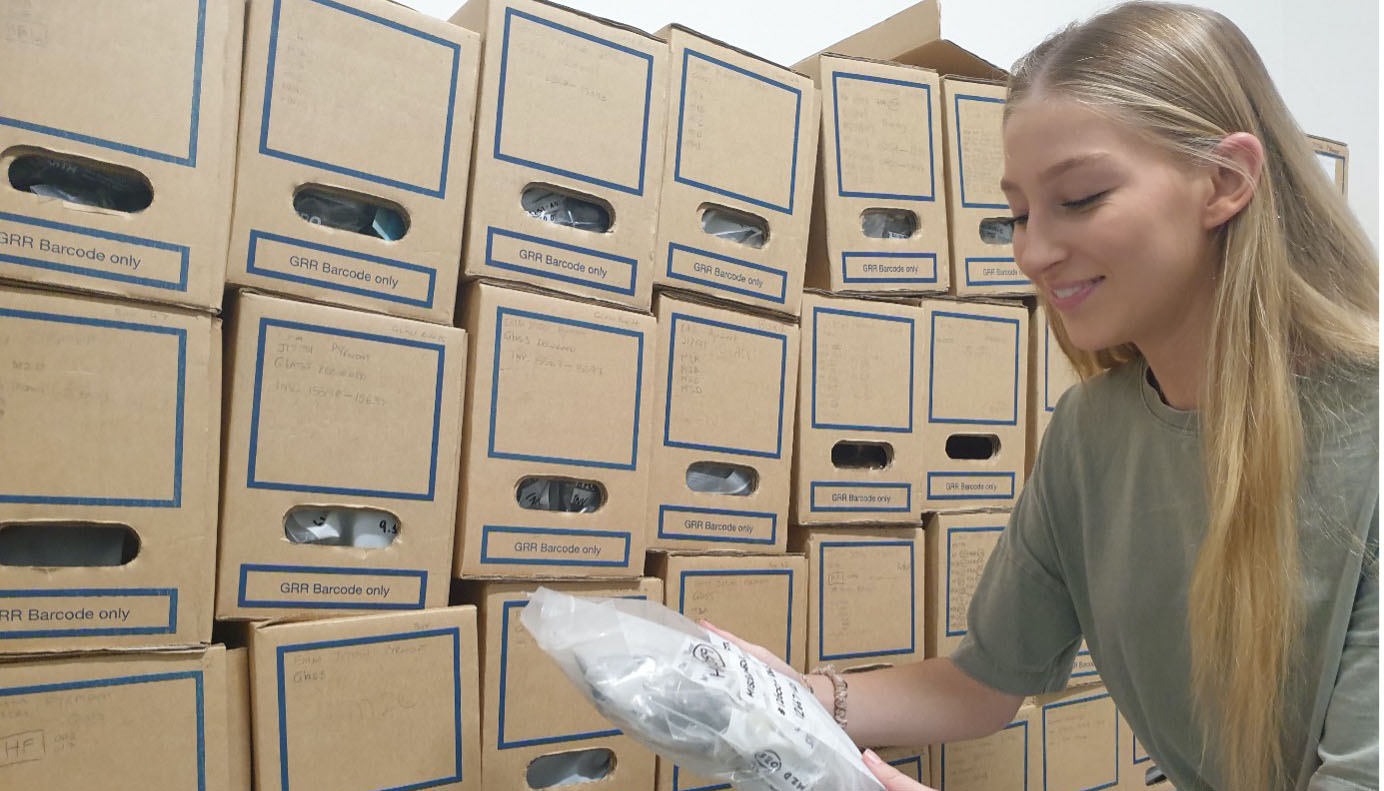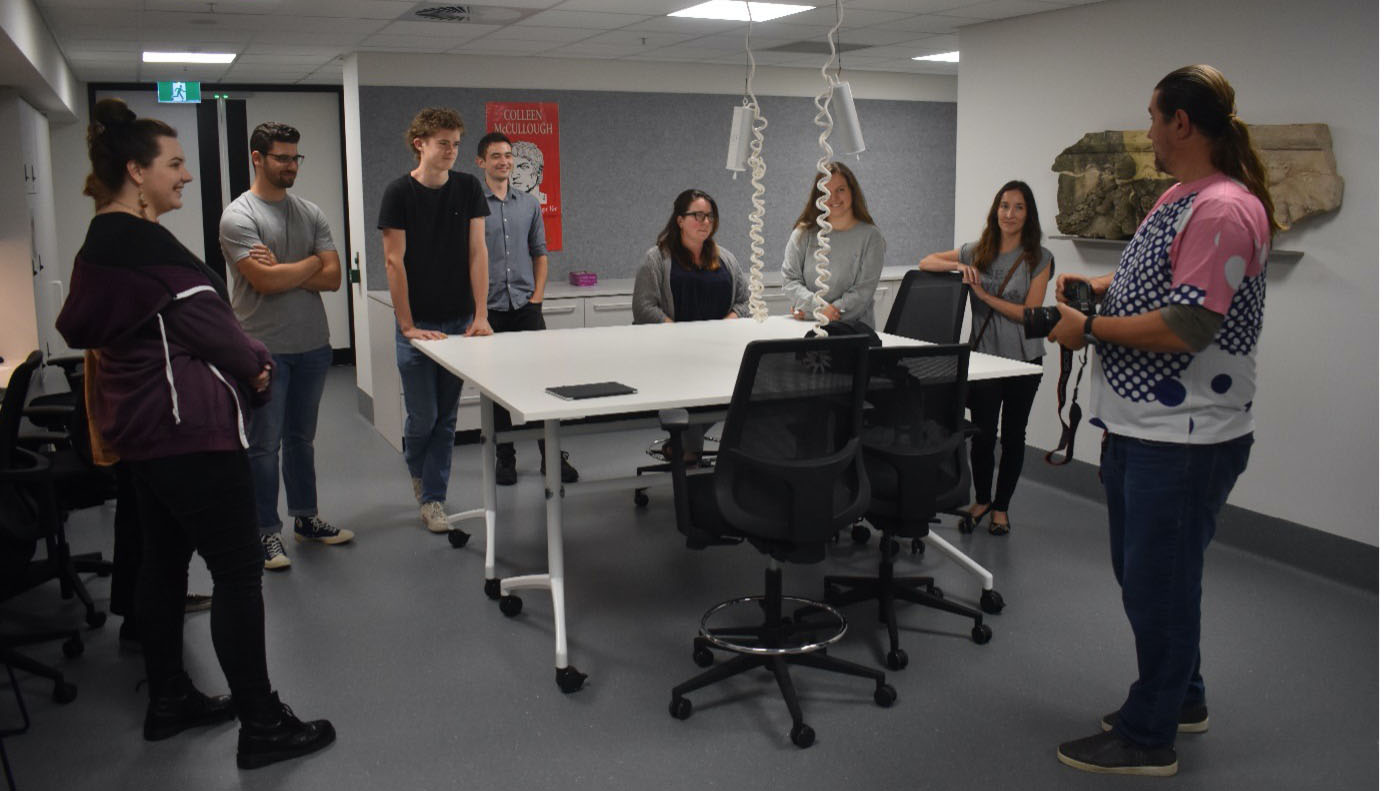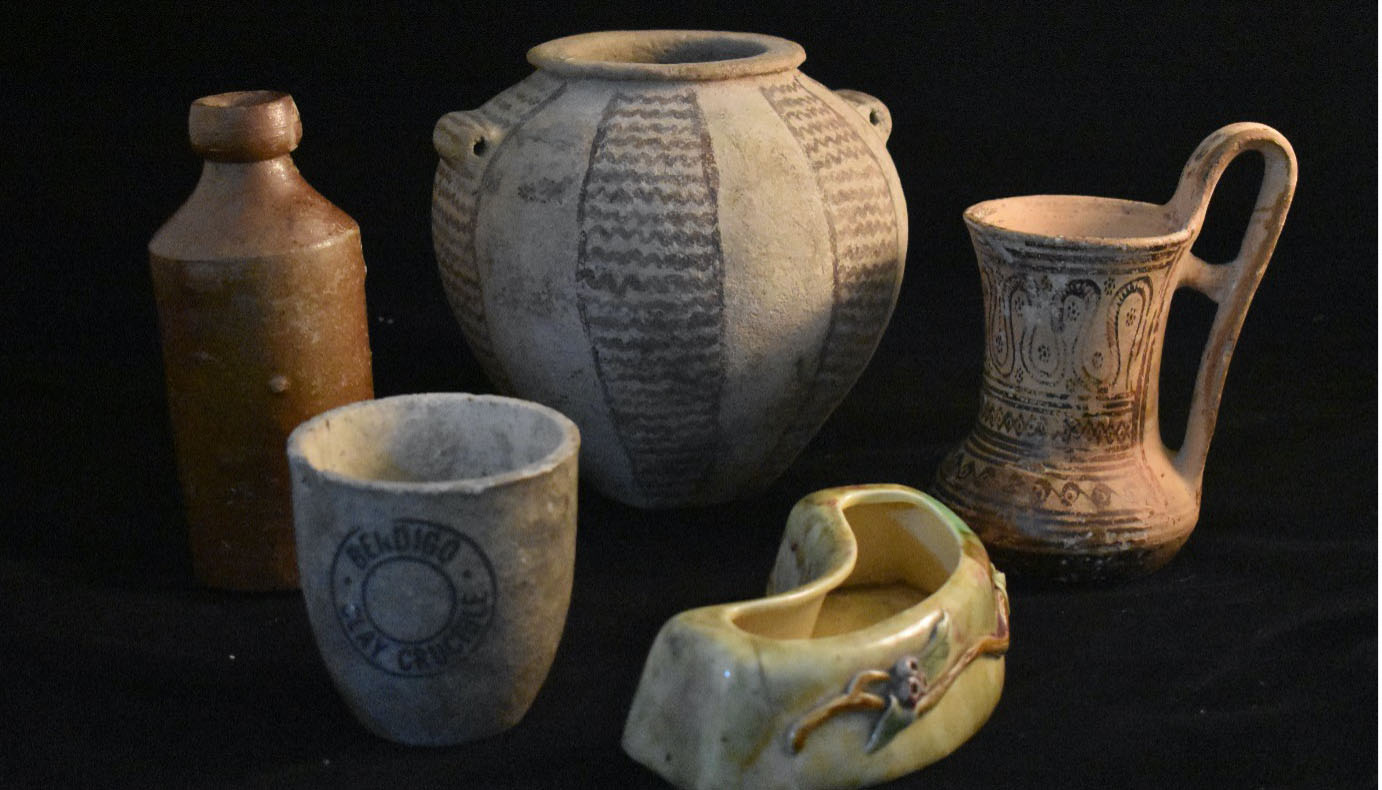Interns and PACE students trained in 3D scanning
With the start of semester 1, the Macquarie University History Museum in 25C Wally’s Walk saw the first round of interns and PACE students filling the new museum with life while it is still closed for visitors.
True to the Macquarie University History Museum's mission, protecting heritage for future generations is the main focus of this semester’s PACE activities. A total of six different projects bring together undergraduate students in the Faculty of Arts, interns, external stakeholders, and teaching and research staff in the Arts Precinct for the first time. With research topics as varied as ancient Egyptian pottery, World War I, migration and the White Australia Policy, the documentation of archaeological finds from Pyrmont (Sydney), and ancient papyrus manuscripts, the new History Museum has become a research-integrated teaching hub.
Working in purpose-built facilities and with cutting-edge technology, the majority of this semester’s 27 students will be trained in 3D scanning using objects from one of the museum’s collaborators, the Parramatta City Council, supervised by Michael Rampe.
3D scanning is a non-intrusive way to digitise rare or fragile objects, as well as objects that are difficult to access or transport. With an increasing number of high-value items safely stored and protected on shelves in museums, 3D scanning has become the leading object-based learning tool. It allows for methods of analysis that the naked eye and object handling cannot match. Working with Parramatta City Council offers the possibility to integrate archaeological artefacts in teaching and research that would otherwise be inaccessible at the university.
Students documenting finds from Pyrmont will focus on ceramics. The Macquarie University History Museum is one of only four museums worldwide that keep a consistent pottery collection that ranges from ca 3377 BCE (Egypt) to 1930s Australia made pottery. Together with the museum’s vast collection from 19th Century White Hart Inn, Windsor NSW, the Pyrmont Collection offers the rare opportunity to study pottery within documented archaeological contexts at home while traveling is not possible. While most Australian pottery is decontextualised today, in 2020 the museum embarked on a novel approach to establish not only where an artefact was made and labelled (provenance) but also the location of where it was recovered (provenience). Thus, we will be able to determine trade links in 19th Century Australia by following the traces of pottery. 
Hannah Mclaughlin (pictured above) says, “In January 2021, I was fortunate enough to participate in the excavations at Aixonidai Halai through College Year in Athens. I am interested in Australian archaeology and believe it is absolutely necessary to research and understand the archaeological record within the country I live. The Pyrmont collection seeks to develop this understanding.”

Caption: Michael Rampe introducing PACE students and interns to 3D scanning

Caption: Ceramics dating from 4th Millenium BCE (Egypt) to the 1930s (Australia)